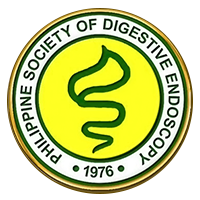GASTROSCOPY
What is Gastroscopy?
Gastroscopy is a non-surgical procedure performed by a gastroenterologist to evaluate the upper GI tract which includes the esophagus, stomach and first part of the small intestine. It uses a flexible endoscope with a built-in camera at its tip, connected to an image processor and monitor where the images taken can be viewed in real time. Tissue samples can be obtained as well to check the presence of infection or malignancy. Therapy can likewise be employed, from as simple as stopping an ulcer bleed thru deployment of clips, to a more complex like bypassing an obstruction using a metal stent. This procedure can be safely performed under local or intravenous sedation with very minimal risk for complication.
Do you have any of the following complaints?
Pain or discomfort in the upper part of your belly
- Worsening heartburn or burning sensation behind your chest
- Bitter or acidic taste in your throat
- Having bad breath despite good oral hygiene
- Vomiting blood
- With difficulty or pain in swallowing
- Black-colored stools
Unexplained weight loss
Accidental ingestion of toxic substances
- Swallowed accidentally a foreign object
If YES, you might need an Upper Endoscopy or Gastroscopy
COLONOSCOPY
What is Colonoscopy?
Colonoscopy is a non-surgical procedure performed by a gastroenterologist to evaluate the lower GI tract which includes the large intestine and distal part of the small intestine. It uses a flexible endoscope with a built-in camera at its tip, connected to an image processor and monitor where the images taken can be viewed in real time. Tissue samples can be obtained as well to check the presence of infection or malignancy. Therapy can likewise be employed, from as simple as stopping an ulcer bleed thru deployment of clips, to a more complex like bypassing an obstruction using a metal stent. This procedure can be safely performed under local or intravenous sedation with very minimal risk for complication.
Do you have any of the following complaints?
Pain or discomfort in your lower belly
Altered bowel habits either constipation or diarrhea
Mucus or blood in your stools
Unintentional weight loss
Or you are asymptomatic but…
50-years old and above
have a family member with colon cancer
with previous colonoscopy showing adenomatous polyp
If YES, you might need a Colonoscopy.
ENDOSCOPIC RETROGRADE CHOLANGIOPANCREATOGRAPHY (ERCP)
What is ERCP?
ERCP is a non-surgical procedure performed by a gastroenterologist to evaluate the intrahepatic and extrahepatic bile ducts or pancreatic duct. It uses a flexible endoscope with a built-in side viewing camera at its tip, connected to an image processor and monitor where the images taken can be viewed in real time. Once at the opening of bile and pancreatic ducts, a catheter is then introduced to visualize the ducts aided by a radio-opaque dye under x-ray. Tissue samples can be obtained as well to check the presence of infection or malignancy. Therapy can likewise be employed, from as simple as removing a stone using a basket, to a more complex like bypassing an obstruction using a metal stent. This procedure can be safely performed under local or intravenous sedation with low risk for complication.
Do you have any of the following symptoms and findings?
Yellowing of the eyes and skin with or without pain in your belly accompanied by fever
Abnormal findings on imaging studies like ultrasound, CT scan or MRI suggesting blockage in the bile ducts or pancreatic duct
If YES, you might need an ERCP.
ENDOSCOPIC ULTRASOUND (EUS)
What is Endoscopic Ultrasound?
EUS is a non-surgical procedure performed by a gastroenterologist to evaluate the different layers of the GI tract and masses in the intra-abdominal area, notably in the pancreas and lymph nodes. It uses a flexible endoscope with a built-in camera and ultrasound probe at its tip, connected to an image processor and monitor where the images taken can be viewed in real time. It can aid clinicians in taking the next appropriate plan of action in times when standard imaging studies like CT scan and MRI are equivocal, e.g., tumor involvement or extent. Tissue samples can be obtained as well to check the presence of infection or malignancy. Therapy can likewise be employed, from as simple as aspiration of cystic fluid, to a more complex like bypassing an obstruction using a metal stent. This procedure can be safely performed under local or intravenous sedation with low risk for complication.
Do you have any of the following findings?
Lump in your esophagus, stomach, pancreas or colon for accurate locoregional staging or tissue sampling
For drainage of intraabdominal fluid collection
If YES, you might need an EUS.
SMALL BOWEL ENTEROSCOPY (SBE)
What is Small Bowel Enteroscopy?
Small Bowel Enteroscopy is a non-surgical procedure performed by a gastroenterologist to evaluate the small intestine. It uses a flexible endoscope with a built-in camera at its tip, connected to an image processor and monitor where the images taken can be viewed in real time. Tissue samples can be obtained as well to check the presence of infection or malignancy. Therapy can likewise be employed like stopping an ulcer bleed thru deployment of clips. This procedure can be safely performed under intravenous sedation with minimal risk for complication.
Do you have any of the following symptoms or findings?
Bleeding from your digestive tract and no definite source can be seen on gastroscopy and colonoscopy
With lump in the small intestines on imaging like CT scan and MRI, that may require direct assessment and biopsy
If YES, you might need an EUS.





